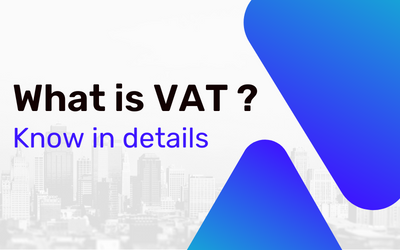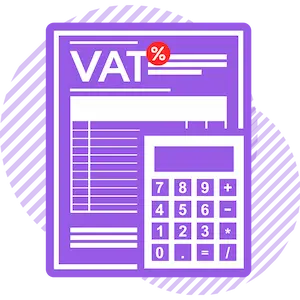Value Added Tax, or VAT, is an integral component of trading and revenue generation for both governments and businesses. When purchasing goods or availing of services, part of what you pay goes towards VAT; collected by businesses then paid over to governments who then use this revenue stream for public services and infrastructure projects – ultimately helping drive economic development within countries.
But managing VAT presents businesses with a formidable challenge, particularly those operating within an EU environment. It requires meticulous record-keeping of transactions, accurate calculation of tax amounts and timely payments to authorities; any discrepancies could lead to legal action and financial penalties while taking up valuable time and resources that could otherwise be invested into core business activities.
Technology has long been seen as the modern day problem-solver. Recently, technology has proven its worth when it comes to simplifying VAT management with various tools and applications available that automate various tedious VAT-related tasks, such as calculating VAT, creating invoices, filing returns, ensuring compliance with tax laws, etc.
Automated VAT Calculations

Accurate calculations are key to successful VAT management. VAT calculation was a manual process prone to mistakes, even one small mistake could cause serious issues, including inaccurate tax payments and potential legal complications. With different products having different VAT rates and with tax rates changing regularly over time, remaining up-to-date and ensuring accurate calculations was an arduous undertaking.
Technology has changed VAT calculation systems for both businesses and individuals. It created automated VAT calculation systems which make tax preparation much simpler and accurate. Simply input all necessary details, and the system calculates your VAT amount without leaving room for human error.
Updating tax rates is quick and effortless which gives users confidence that the amounts are always correct. Automated calculations also facilitate streamlining the calculation process itself as changes to tax laws require immediate updates for calculations to remain compliant and accurate
Automated VAT calculation systems come equipped with additional features that make VAT management much less burdensome, such as creating invoices, compiling sales/purchase records and filing returns
Digital Invoicing
In the days before digital technology was widely adopted, invoicing was performed manually using paper, pens, and calculators. Not only was this process time-consuming and error prone but improper VAT calculations could lead to legal ramifications as well as financial discrepancies. Paper invoices also become easy targets for theft or damage while organizing them can become tedious over time.
It has revolutionized invoicing systems. Now, digital invoices provide an easier, quicker, and more accurate method to manage invoices than ever before. You can create, send, store and track them securely all within digital systems on either computer or cloud systems to ensure all sales and purchase records remain safe and organized.
Digital invoicing software can automatically calculate VAT on each transaction, saving time and reducing errors. Furthermore, should there be any changes in VAT rates, this software can be updated to accommodate them so your invoices always show the appropriate VAT amount – essential to staying compliant with tax laws.
Digital invoices can also be sent by email, which saves both paper and time while simultaneously giving your customers instantaneous access to them, helping to expedite payment more rapidly.
Online VAT Registration and Filing
Traditional methods for VAT registration and filing involved visiting government offices, filling out paper forms, and waiting in queues – an inefficient and time-consuming process in which paper documents could easily become misplaced or even disappear completely, causing delays and frustration for both the individual and government officials involved.
Online platforms for VAT registration and filing has significantly simplified these processes, making registration, filing returns, and paying your VAT easier than ever before from home or work. You can now register, file returns, pay VAT online – saving both time and ensuring your documents are submitted safely and timely.
Online VAT registration systems guide you through the registration process, making sure all necessary details are correctly filled in and offering support services to answer any of your questions about VAT. Such support can be especially valuable if this is your first experience with it.
Online VAT filing platforms provide an efficient method for filing VAT returns, with automated checks to verify the information submitted by users accurately and completely, thus minimizing risk and helping ensure compliance with VAT laws.
Online platforms make it easy to keep an overview of all submissions made, making it simpler than ever to track your VAT registration and filing history – an invaluable feature for maintaining good financial records.
Online Registration and Filing
Digital transformation has revolutionized how businesses interact with tax authorities. Online VAT registration and filing platforms have made compliance simpler than ever – from when you begin business to filing for VAT online is now a seamless experience – you simply fill out digital forms, upload any necessary documents, and click submit; all in a matter of minutes! These online platforms are built to guide users step-by-step to make sure nothing important slips by.
When it comes time to file VAT returns, online platforms come to the rescue again. They enable an efficient submission of sales and purchase records while you can make any payments to the government securely through payment gateways – eliminating physical checks or cash transactions which are more prone to delays and other issues.
Online VAT registration and filing platforms often come equipped with error-checking mechanisms, notifying users when missing fields or discrepancies are identified in their submission. This proactive approach helps address mistakes before they escalate into larger problems.
These platforms also provide a digital trail of all your transactions with tax authorities, providing transparency that’s critical in resolving any future disputes or clarifications and also contributing to maintaining an impressive compliance record that protects the reputation of your business.
Real-time VAT Reporting:
Real-time VAT reporting tools offer a significant step toward making VAT management more transparent and informed. Instead of waiting until the end of a tax period to discover your VAT liability, these real-time tools provide this data instantly.
Real-time VAT reporting allows you to monitor VAT collected and paid on each transaction as it occurs, providing invaluable insight into your tax obligations as well as cash flow management – always knowing exactly how much VAT is due at any given time.
Real-time VAT reporting tools typically feature dashboards to make data presentation simple and understandable, including visual representations of VAT figures that enable you to identify trends or areas of concern more quickly and make informed decisions regarding business operations.
Real-time reporting is also invaluable during tax audits, providing access to accurate, up-to-date VAT data that demonstrates compliance and transparency while streamlining the audit process, saving both time and stress.
Accessing VAT data real-time across devices – be they computer, tablet, or mobile phone – offers greater convenience and flexibility; no longer are you tied down to one desk for keeping up with your VAT obligations.
VAT Verification Systems
Verifying the authenticity of VAT information is essential in VAT management, making VAT Verification Systems invaluable tools in assuring that businesses and customers providing VAT numbers and details provide legitimate ones. These systems work by cross-referencing this data against official databases to confirm its legitimacy.
VAT Verification Systems offer businesses a powerful weapon against VAT fraud. By verifying the VAT numbers are valid, businesses can avoid engaging in transactions that might lead to unlawful activities – something particularly vital when engaging in cross-border transactions where different VAT rules apply.
VAT Verification Systems also help businesses maintain accurate financial records. By verifying VAT details of transactions, businesses can ensure their VAT records are complete and correct – essential for reporting and compliance purposes.
Verification systems can also be seamlessly integrated with digital invoicing or accounting software, providing real-time verification of VAT details in invoices generated, guaranteeing compliance with VAT laws.
VAT Verification Systems also help businesses build trust between themselves and their clients. When clients observe that their VAT details are handled appropriately and verified for accuracy, it helps cement relationships in business relationships.
Mobile Applications
In today’s fast-paced world, being able to manage VAT from anywhere is an invaluable ability. Mobile apps designed specifically to facilitate VAT management have become invaluable resources for busy individuals and business owners – they offer various features designed to make managing VAT simpler than ever.
One of the hallmarks of mobile applications is their convenience: You can calculate VAT, generate invoices and file VAT returns no matter where you are with just a simple tap of your finger – an invaluable capability in today’s busy world!
Mobile applications often offer user-friendly interfaces designed for ease of use, offering simple navigation and clear instructions – this makes VAT management much less daunting for non-tax experts.
Mobile apps often include features that facilitate real-time VAT tracking, alerts for upcoming VAT filing deadlines and support for multi-country VAT rates – these features help ensure compliance with VAT laws regardless of your location.
Artificial Intelligence (AI) and Machine Learning (ML) in VAT Management
Artificial Intelligence (AI) and Machine Learning (ML) technologies have transformed VAT management. By adding intelligence and automation to this process, they make VAT management more efficient and insightful than ever.
AI and ML offer fast data analysis capabilities capable of quickly processing vast amounts of VAT information. Their fast analysis can uncover trends, anomalies, or potential areas of concern that would otherwise go undetected through manual inspection. For instance, machine learning algorithms can predict potential audit risks based on historical data analysis and provide recommendations to mitigate them.
AI can assist tax professionals by automating routine VAT tasks such as data entry, calculations and responding to basic queries about VAT. This automation reduces time and effort spent managing VAT while freeing them up for more strategic tasks.
Predictive analytics powered by machine learning (ML) can be transformative for businesses. These analytics help anticipate changes to VAT liabilities due to factors like market trends, tax laws or company performance – invaluable information that allows for planning and decision-making processes.
AI and ML technologies can also increase the accuracy of VAT reporting by identifying errors or discrepancies in VAT data that must be corrected prior to filing returns for VAT purposes, helping businesses avoid potential financial penalties and legal complications. This proactive error detection can save businesses significant financial penalties as well as legal troubles.
Conclusion
Technology’s role in VAT management goes beyond automating processes; rather it should provide individuals and businesses with tools they need to ensure compliance, make informed decisions, and focus on core operations. The digital revolution in VAT management stands as an indication of how using modern tools can result in more organized, compliant, and efficient handling of VAT obligations.
As we progress into an age where technology and tax compliance coexist, using digital tools is no longer just an optional extra; it is now essential. Leveraging digital tools means staying ahead of compliance issues, being compliant, navigating VAT landscape easily and confidently and staying compliant – while technology will only become more complex over time, creating even simpler ways of handling VAT management for our future.
FAQs (Frequently Asked Questions)
What is VAT?
VAT, or Value Added Tax, is a type of tax that’s added to the price of goods or services at each stage of production or distribution.
How is VAT calculated?
VAT is calculated by multiplying the VAT rate with the taxable amount, which is the price of the goods or services being sold.
Why is managing VAT important for businesses?
Managing VAT is important for businesses to ensure they comply with tax laws, accurately calculate tax owed, and maintain good financial records.
How does technology simplify VAT management?
Technology simplifies VAT management by automating calculations, streamlining the filing process, and providing real-time reporting on VAT data.

